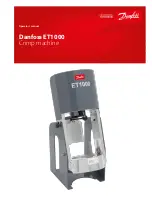
13
EN
Causes
A.
Air in the system (most common cause).
B.
Dirt or debris in helm pump valves.
C.
Internal bypass in steering cylinder and/or autopilot pump.
Solutions
A.
Confirm that system is full of fluid and bled free of air. Refer to
installation and operating manual for filling and purging procedures.
B.
Check fluid condition for signs of milky, dirty or contaminated fluid.
Flush system as noted on page 17.
C.
Conduct the cylinder/helm pump test on page 20.
4.8 Boat drifts to one side or the
other while underway
NOTICE!
On multiple helm applications, there is a possibility to enter a slow
freewheel situation if 1–helm is turned 1–direction and then the opposite
helm is slowly turned the opposite direction. This is normal and can be
stopped by performing a quick, partial turn of the wheel to fully close a
hydraulic valve.
NOTICE!
If helm/cylinder pass the test and there is not autopilot on board the boat
should be sea trialed while conducting the following test.
WARNING!
Dometic does not recommend the disassembly of any helm pump.
Contact an Authorized Service Center, or, replace helm pump.
CAUTION!
A system that is not responding must be diagnosed and corrected
prior to use.
Test
If possible, carefully take boat into an area free from obstruction.
• Run boat straight and then put in neutral. Do not turn wheel.
• Using a felt marker, mark cylinder shafts on both ends at gland seals.
• Do not turn wheel, bring boat up to a safe speed to determine if boat
veers off course.
• Shut down engine.
If the marks that you made did NOT move, this is a sign that the steering
system is holding course. In this case the steering system is not at fault.
Boat balance and hull design should be looked into.
















































